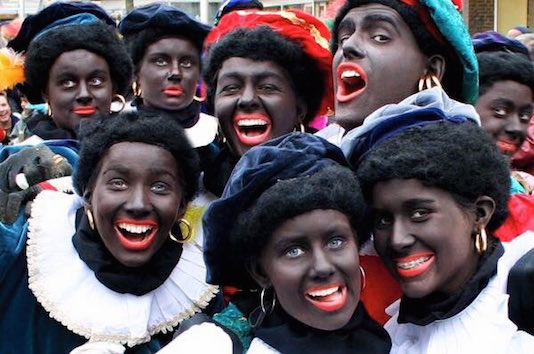What can I say? It has been the most marvellous experience collating all the various guest blog posts that I’ve had the good fortune of being able to showcase on my blog. From experiences to thought pieces, from fiction to poetry, from opinion pieces to slice of life offerings, I have enjoyed the process of collecting and presenting this fascinating array of articles. A huge thank you to all my contributors! Such talent, such imagination, such wisdom and such depth and breadth of experience. I am truly grateful, and humbled to have been a conduit for all of that.
Becca is an incredibly creative soul. If there any kind of artistic pie, you can bet your bottom dollar she’s got a finger in it. In her article, A story of many strands – Becca Robbins, she talks of her love for knitting. From choosing the yarn, to its transformation into something beautiful and wearable, she allows us to be a part of its journey. Never will I ever look at a hand knit sweater in the same way again.
Mahika’s article, The BIG difference: J20 and H20- Mahika M, was actually a school project. She had insisted on reading it out to me while I was completing certain chores about the house. Not being of a very scientific bent of mind, I was only half listening to this essay about water, when in spite of myself, I found myself riveted in the way she had taken a rather dry (or wet) subject, and made it understandable. In comparing J20 a soft drink that most teenagers gravitate towards, and water, that most of us take for granted, she managed to display the latter’s incredible qualities and obvious superiority to any other liquid on the planet. Much to her discomfiture, I insisted on including it in my guest blogs. Do have a read as it educates without patronising, and is full of subtle humour.
Inside the city in me – Bharat Shekhar, was Bharat’s contribution to my blog. Bharat is a very well known poet in Delhi. He has written a few children’s books and also writes prolifically about current affairs and politics in India. However, it is his poetry that is truly magical. His words have the power to transport you to another realm. They wrap themselves around your mind and then penetrate your heart to finally set up residence in your soul. I am in awe of his prowess and look forward to reading so much more of his works.
James’ Examples of found articles circa state controlled Serenity. 2356 AD – James Dhanjal was a Science Fiction piece that was very well liked by my followers on WordPress. Not being particularly accomplished in this genre, I truly enjoyed reading and displaying this story. Imagination is a wonderful thing, and other people’s imagination even more so. James took me into a dystopian future where a State run program has gone very very wrong. Disturbing and fascinating.
A lot has been said in the Indian Press about the state of pollution in Delhi. Yet, a poignant piece from Melissa Breathless – Melissa Singh, a resident of Delhi, spoke volumes about the noxious air that the inhabitants of the city are breathing. Her question is a simple one: is this the price of progress? Something to ponder.
Johanna confronted tradition and discrimination in her insightful and discerning The Dutch tradition of Black Pete – a jolly children’s friend, or a racist caricature? Johanna Brunt. It is so easy to accept and follow certain practices as gospel just because there is tradition attached to them. How much harder it is to try and understand that it maybe time to change a hurtful and discriminatory custom. How much harder to place yourself in the shoes of the other, and feel as they do. Johanna did all this and more, going as far as to suggest the alternative of Roetpiet as the future of Black Pete. Will the Dutch do the right thing? That remains to be seen. However, as long as there are empathetic, open minded and forward thinking individuals like Johanna, I still have hope.
Hope was the light that shone in Sonia’s The games women play – Sonia Narayanan. An avid sports follower and an extremely talented writer, Sonia showed just how far Indian sportswomen have come in the last few decades. With meagre resources and next to no support, it is iron will and determination that allowed these young women to conquer all kinds of hurdles to emerge victorious in various sporting arenas. As India changes its outlook towards women in sports, a golden era beckons. Long may it last and more power to these incredible girls!
Pecking order by Prianka was a cry from the heart. A cry of a thirteen year old girl who feels neglected and sidelined by her peers for her non conformist ways. It was a tough piece to write, as it exposed all of Prianka’s vulnerabilities and hurt. Yet, as a writer, it is when you lay yourself bare that you connect with your audience. So many people reached out to her through me, and through the blog, to say, hold on and stay true to yourself. Hierarchies diminish and disappear. Individuality rarely does.
The last article, The impossibility of saying anything even remotely comprehensible…… by Michael-Eric Schwaabe ,was Michael’s brilliantly sharp observation on how communication can sometimes fail us. When thoughts, ideas, social structures and strictures are subconsciously embedded in our psyches, we find words inadequate in bridging chasms of understanding. Yet, the point is to never give up. In trial and error, in non or misunderstanding, there is still the attempt to reach a solution. In reaching out to the other, we are expanding our own boundaries and that can only be a good thing.
I know my Guest month overran somewhat. With so many wonderful, diverse articles to display, I had little choice but to let it.
“We need to give each other the space to grow, to be ourselves, to exercise our diversity. We need to give each other space so that we may both give and receive such beautiful things as ideas, openness, dignity, joy, healing, and inclusion.”
— Max de Pree




